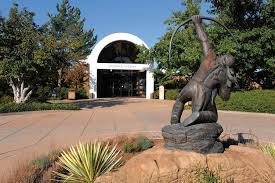Jun 26 2016 - Nov 6 2016
Tulsa, OK
West Mexico: Ritual and Identity features a spectacular selection of ceramic figures and vessels from the Gilcrease collection, augmented by items from public and private collections.
Better known today as a sunny vacation destination and the home of tequila, West Mexico’s past is a fascinating story that dates back more than 2,000 years, around the time that Teotihuacán (near present day Mexico City) was emerging as the most important city in the Americas. Due to its sizable population, stature as a religious center and apartment-style dwellings, this city was a cultural center in its day. Meanwhile, another vibrant society, the Teuchitlán (commonly known by social scientists as the “Shaft Tomb” culture), was developing between Guadalajara and the west coast of Mexico in what is now Nayarit and Jalisco. This land of mild climate offered abundant fresh water, rich soils, mineral wealth and access to the resources of the ocean and the mountains.
Large, expressive ceramic figures frequently were part of the ritual items deposited in shaft tombs. Ceramic human figures adorned with brightly colored clothing, tattoos and body paint provide an intimate look at men and women of the culture, along with a variety of animals, birds, fish and reptiles. In the 1940s and ’50s, Thomas Gilcrease amassed a collection of more than 500 ceramic figures and vessels from West Mexico, including two significant human figures, each more than 30 inches in height, and among the finest figures from the region.
This exhibit will examine and interpret the art and artifacts of the shaft tomb culture that flourished in West Mexico 300 BC-500 AD, bringing together the most current research from the field, scientific laboratories and objects to re-create life, death and ritual.
Credit: Exhibition overview from museum website.
Whether you go or not, Shaft Tombs and Figures in West Mexican Society: A Reassessment, brings together an international team of contributors to reconnect field research on the shaft tombs of western Mexico (ca. 300 B.C.–A.D. 500) with museum-based research on the distinctive human figures for which the region is known. These finely made figures and dioramas have attracted the interest of archaeologists, art historians, and museum curators for over a century because of their expressiveness and rich detail, tempered by the sad fact that most of these objects were looted from shaft and chamber tombs and sold on the wider art market. This volume presents current research reflecting multiple perspectives and using many new techniques for delving into the forms, functions, and meanings of these enigmatic figures.
Exhibition Venues & Dates
Jun 26 2016 - Nov 6 2016
Tulsa, OK

